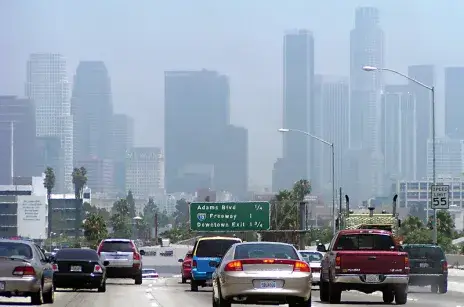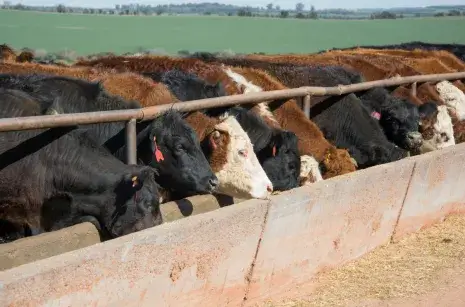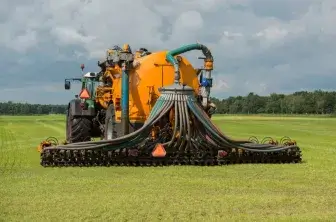Strategy 4: Deploy Strategic Mitigation
Control Pollutants Beyond CO2

Carbon dioxide is not the only greenhouse gas. Many others, like methane, are even worse for the planet's warming. They also frequently cause sickness, so stopping them has both short- and long-term health benefits. Transportation, agriculture, and heavy industries are common sources. States and federal agencies should work with those industries to control these pollutants.
More recommendations
Non-CO2 greenhouse gases, including methane, nitrous oxide, and fluorinated gases (such as hydrofluorocarbons), account for almost 20 percent of all greenhouse emissions in the United States.[i] The primary sources include livestock, oil and gas drilling, coal mining, soil management, and refrigeration. Most non-CO2 greenhouse gases trap more heat per molecule than CO2 in the atmosphere, although they have shorter atmospheric lifetimes. In addition to non-CO2 gases, particulate pollution (soot) causes significant amounts of climate warming while also causing severe health impacts—particulate pollution is the leading environmental cause of premature death.[ii] Particulate pollution from fossil fuels is predominantly located in impoverished areas with high proportions of racial and ethnic minorities in the United States, exacerbating environmental inequality.[iii]
Strengthen and enforce existing regulations and incentives for non-CO2 gases.
Regulation of these emissions offers a tremendous opportunity to provide tangible benefits to the climate while also advancing other goals such as protecting public health. The EPA has written some regulations on emissions of non-CO2 gases, such as methane via the New Source Performance Standards, which regulate the oil and gas industry, and nitrogen oxide emissions from heavy-duty diesel vehicles.[iv] Recent legislation also includes a new tax on methane emissions, although implementation of that tax has yet to be worked out. Some states, including California, have independently implemented additional regulations, such as controlling refrigerants and including methane and fluorinated gases in their cap-and-trade program.[v] Since 2019, Wyoming has enacted policies that require oil and gas companies to capture or reduce methane emissions and regularly inspect equipment with the goal of reducing methane emissions by 45 percent by 2025.[vi]
Focus funding to communities suffering from high pollution by particulates.
Particulate pollution, such as through large agricultural operations or power plants, is often concentrated in frontline communities from sources such as power plants, industrial agriculture, and diesel trucks. Many of the health risks can be reduced with investments in closing coal electricity plants and getting diesel trucks off the road, and targeted investments from federal agencies and states in frontline communities will be necessary to both control these pollutants and minimize the health risks.[vii] Additional investments should also target improved monitoring and data sharing, which will allow more strategic pollution control.
[i] U.S. Environmental Protection Agency, “U.S. State-Level Non-CO2 Greenhouse Gas Mitigation Potential: 2025–2050,” March 2022, https://cfpub.epa.gov/ghgdata/nonco2/usreports/#page2.
[ii] Massimo Franchini and Pier Mannuccio Mannucci, “Impact on Human Health of Climate Changes,” European Journal of Internal Medicine 26 (1) (2015): 1–5.
[iii] Nicole Kravitz-Wirtz, Samantha Teixeira, Anjum Hajat, et al., “Early-Life Air Pollution Exposure, Neighborhood Poverty, and Childhood Asthma in the United States, 1990–2014,” International Journal of Environmental Research and Public Health 15 (6) (2018): 1114.
[iv] U.S. Environmental Protection Agency, “Oil and Natural Gas Sector: Emission Standards for New, Reconstructed, and Modified Sources,” Federal Register 81 (107) (2016): 35824, https://www.govinfo.gov/content/pkg/FR-2016-06-03/pdf/2016-11971.pdf.
[v] California Air Resources Board, “Oil and Gas Methane Regulations,” August 13, 2018, https://ww2.arb.ca.gov/resources/fact-sheets/oil-and-gas-methane-regulation.
[vi] Joyce Stephanie, ”White House Proposes Methane Cuts for Oil and Gas Industry,” Wyoming Public Radio, January 14, 2015, https://www.wyomingpublicmedia.org/natural-resources-energy/2015-01-14/white-house-proposes-methane-cuts-for-oil-and-gas-industry.
[vii] Jason Hill, Stephen Polasky, Erik Nelson, et al., “Climate Change and Health Costs of Air Emissions from Biofuels and Gasoline,” Proceedings of the National Academy of Sciences 106 (6) (2009): 2077–2082.




